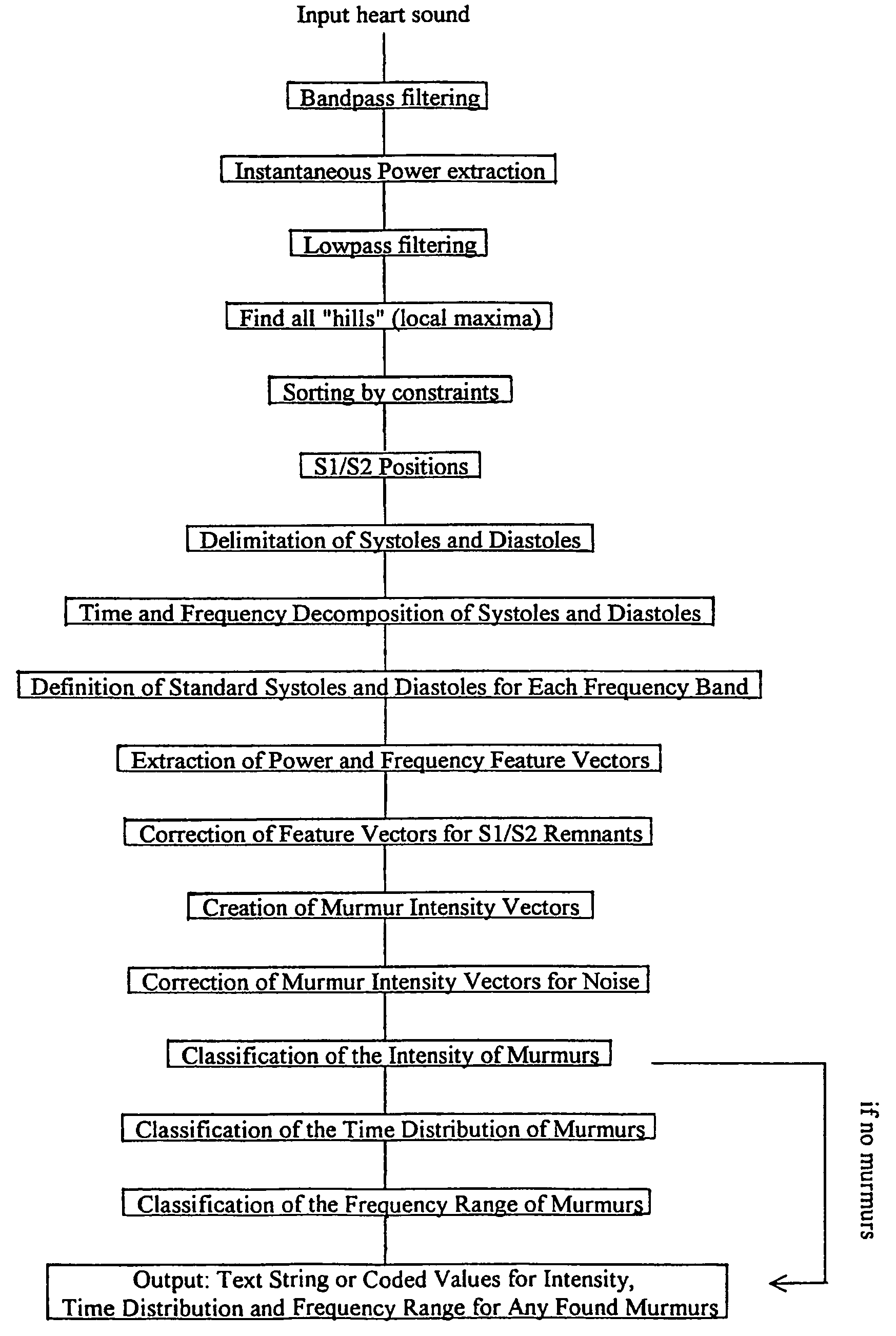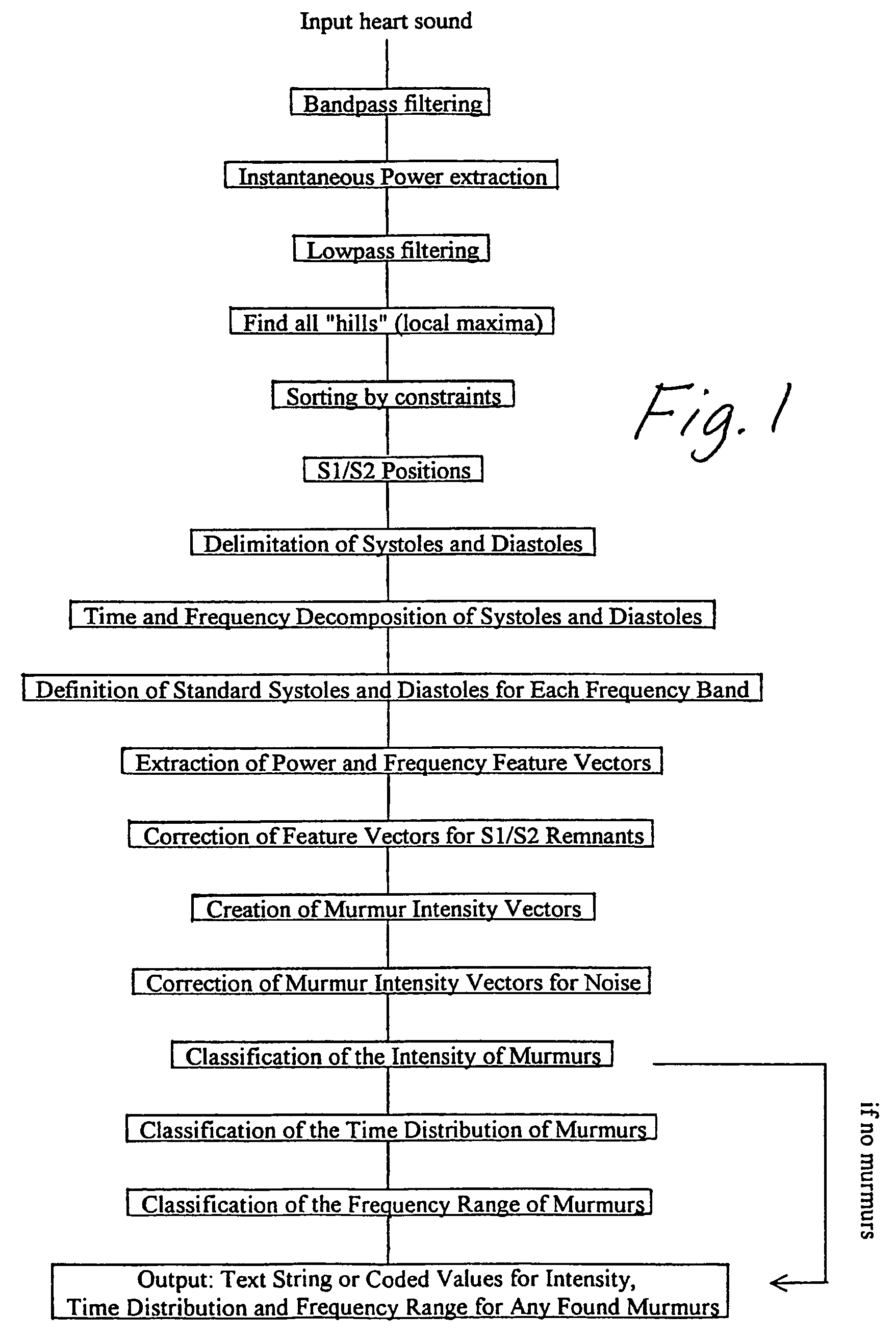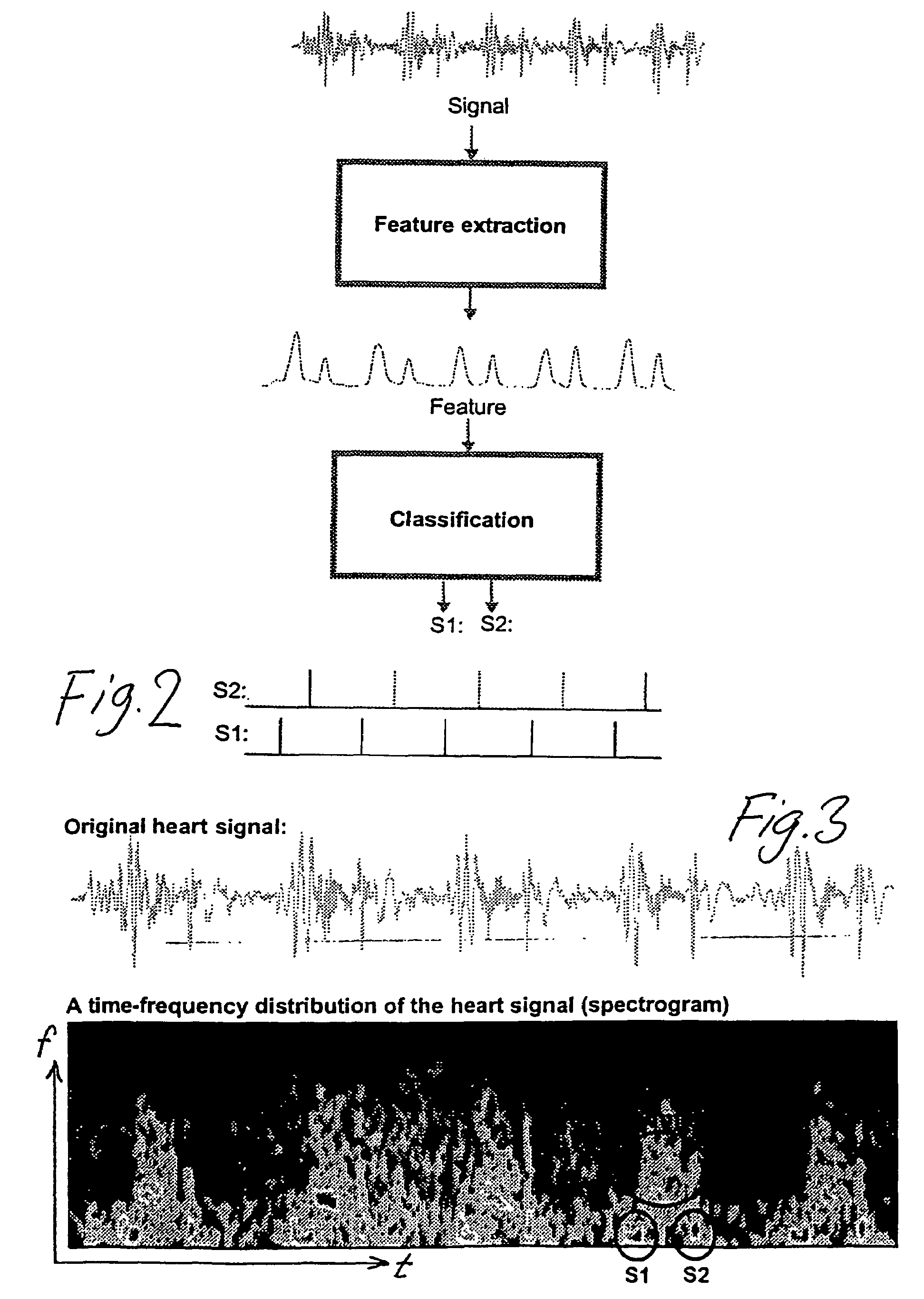Procedure for extracting information from a heart sound signal
a heart sound and information extraction technology, applied in the field of heart sound extraction procedures, can solve the problems of inability to achieve the effect of ecg in addition to phonocardiographic signals, inability to train in auscultation, and inability to achieve aptitude, so as to increase the dynamic range of the remaining signal
- Summary
- Abstract
- Description
- Claims
- Application Information
AI Technical Summary
Benefits of technology
Problems solved by technology
Method used
Image
Examples
example 1
[0038]The input for the procedure consists of 8 seconds of heart sound signal, sampled at a rate of 1000 Hz and read into a digital register subsequent to A / D conversion. The procedure is described with reference to modern digital technology, however in principle the various classification and sorting of time intervals and levels may be performed by analogue means on DC voltages and traditional gates.
[0039]The detector for S1 and S2 essentially consists of two separate processes, a feature extraction part and a classification part. The purpose of the feature extraction is to transform the input signal to a domain, in which the respective location in time of S1 and S2 is more distinct than in the original signal. The classification part determines the precise location of S1 and S2 and correctly identifies them as such.
[0040]In FIG. 2 is demonstrated how murmurs may be observed in the spectrogram of a time function of an original heart sound. The spectrogram is obtained by Fast Fourie...
example 2
[0104]The extraction of features may be used in an enhanced manner by creating a synthetic spatial environment for two ears to listen to via headphones. The ability to distinguish more clearly between several simultaneously occurring phenomena has been used by jet airplane pilots to increase separation when listening to several communication channels simultaneously. The use of special filters for these purposes is known and research has been conducted to determine the filter effect of the head (characterized as Head related Transfer Functions, HRTFs) with regard to sound from two microphones based on the distance and source; see, HRTF Measurements of a KEMAR Dummy-Head Microphone, Bill Gardner and Keith Martin, MIT Media Lab, (HTTP: / / sound.media.mit.edu / KEMAR / hrtfdoc.txt, Aug. 8, 2000). However, to date, no known attempt has been made to use this ability in connection with features extracted from a heart signal and presented as index markers simultaneously with the heart signal itse...
PUM
 Login to View More
Login to View More Abstract
Description
Claims
Application Information
 Login to View More
Login to View More - R&D
- Intellectual Property
- Life Sciences
- Materials
- Tech Scout
- Unparalleled Data Quality
- Higher Quality Content
- 60% Fewer Hallucinations
Browse by: Latest US Patents, China's latest patents, Technical Efficacy Thesaurus, Application Domain, Technology Topic, Popular Technical Reports.
© 2025 PatSnap. All rights reserved.Legal|Privacy policy|Modern Slavery Act Transparency Statement|Sitemap|About US| Contact US: help@patsnap.com



